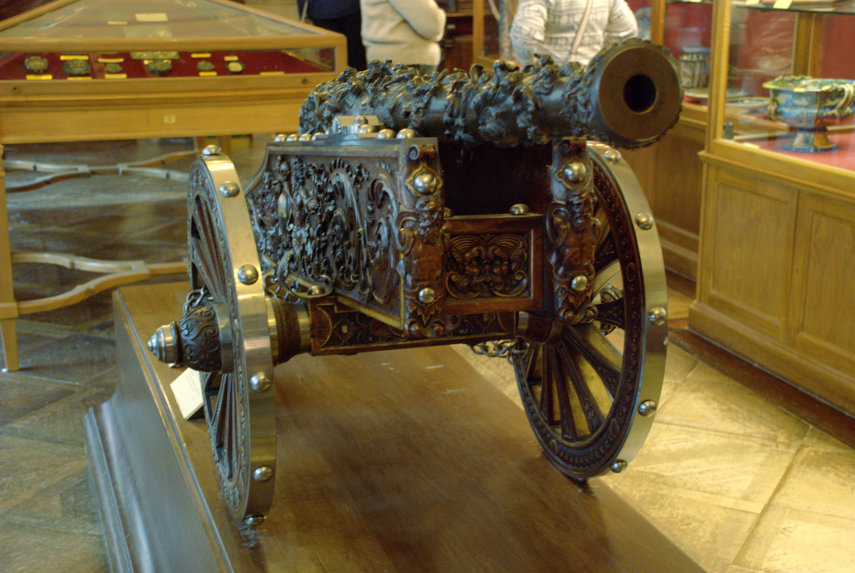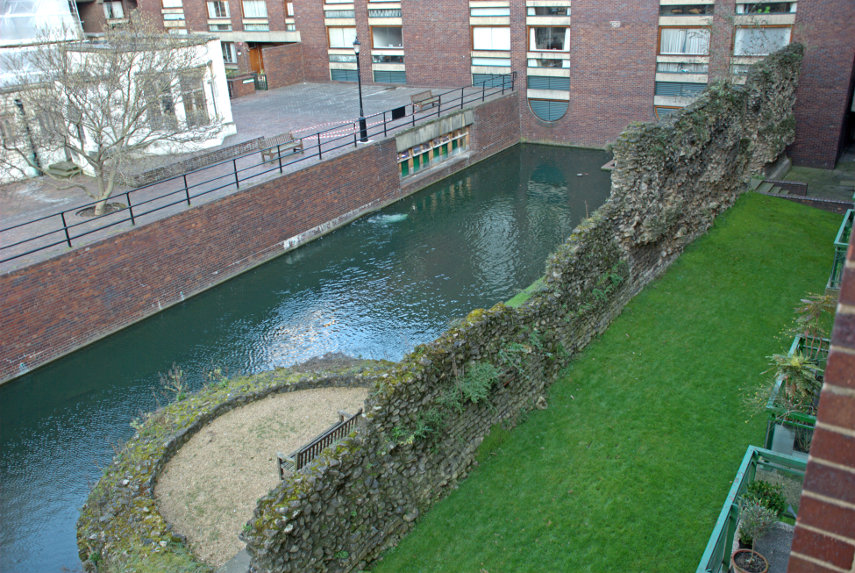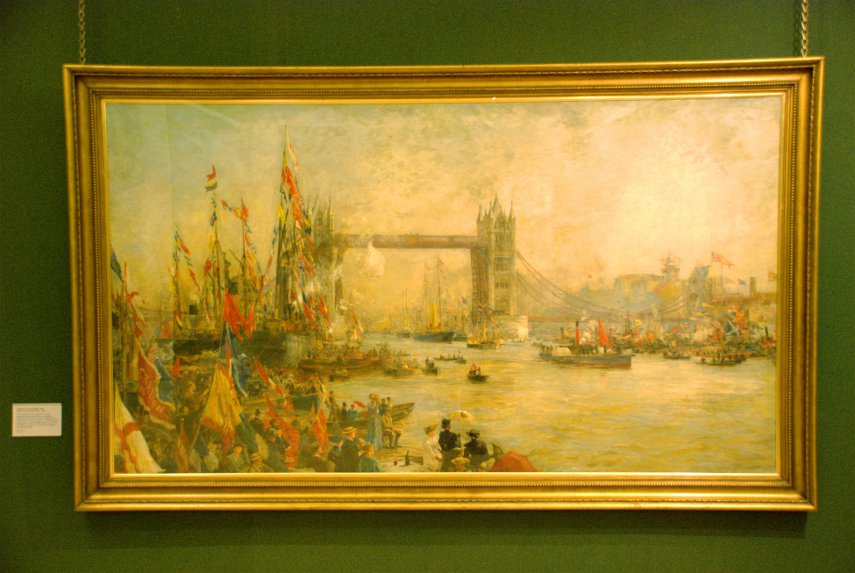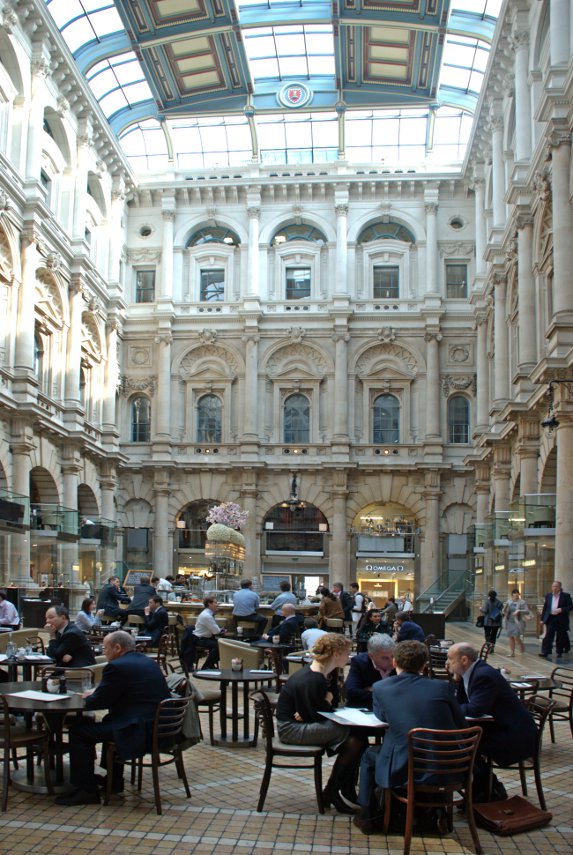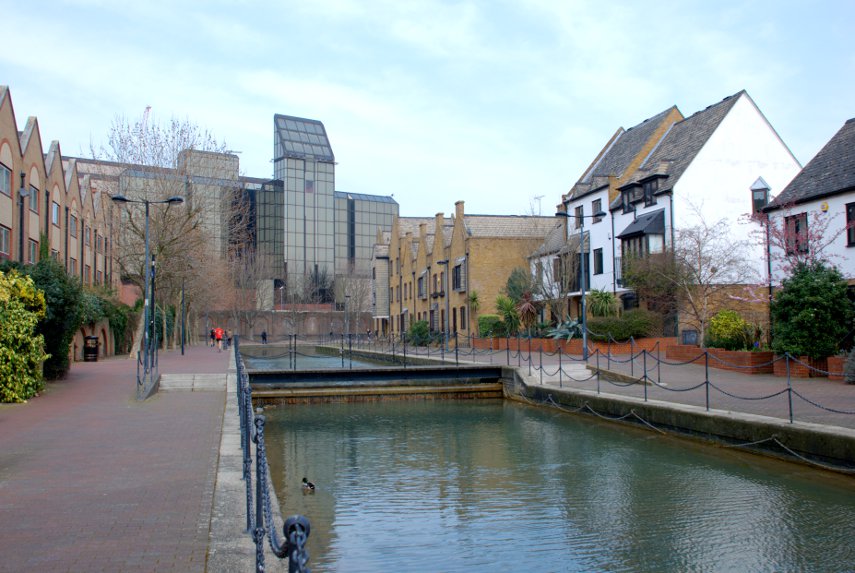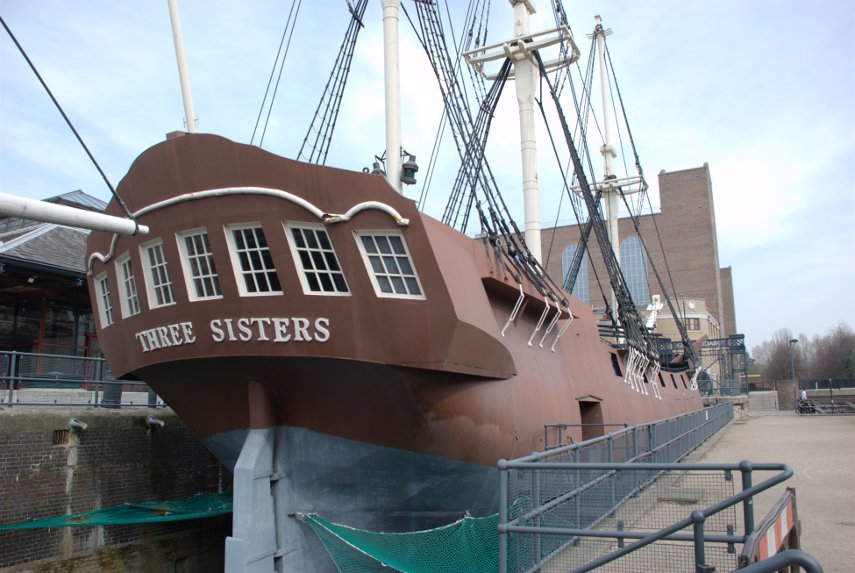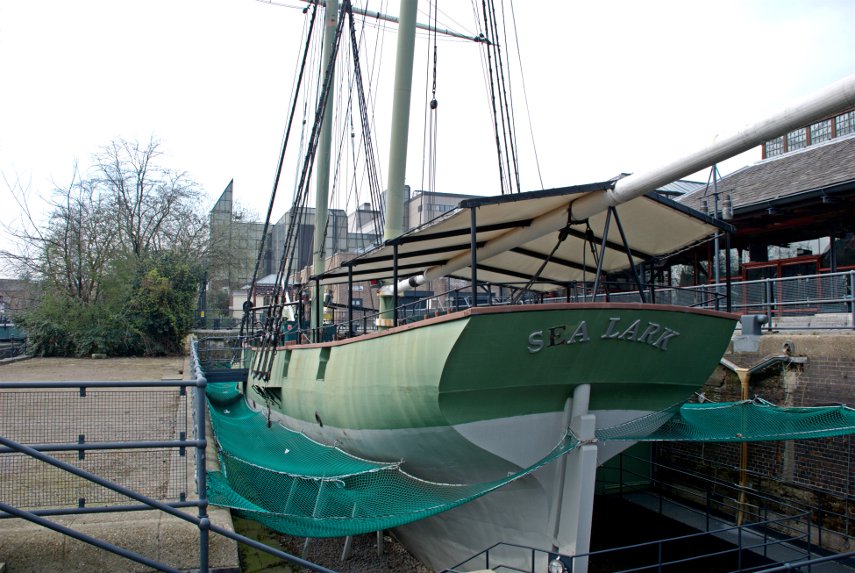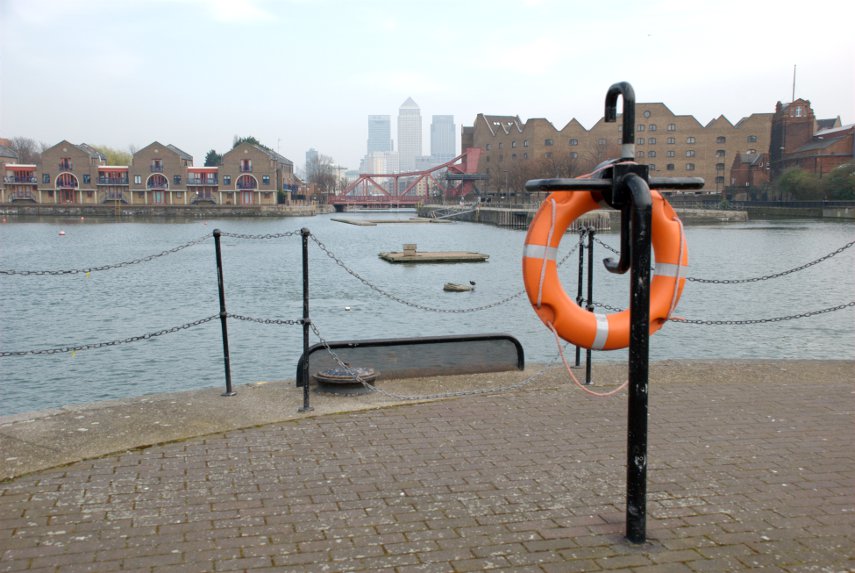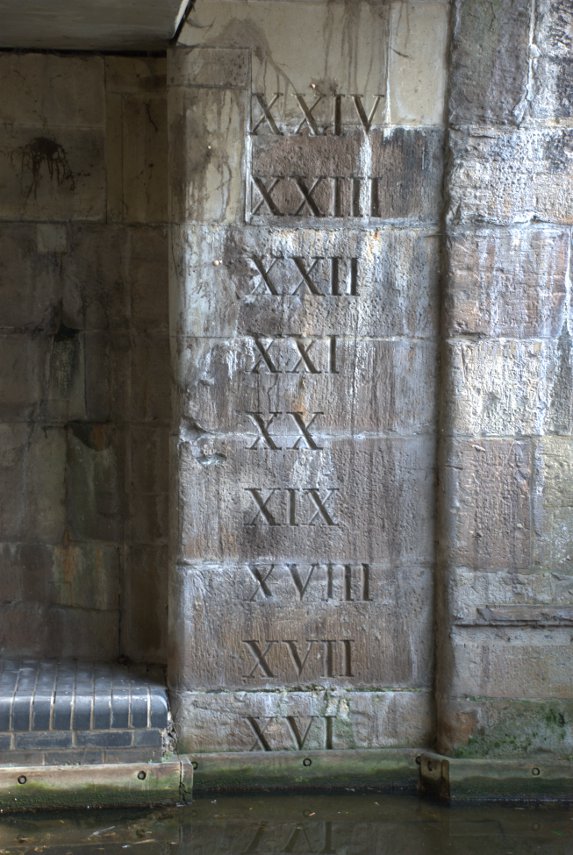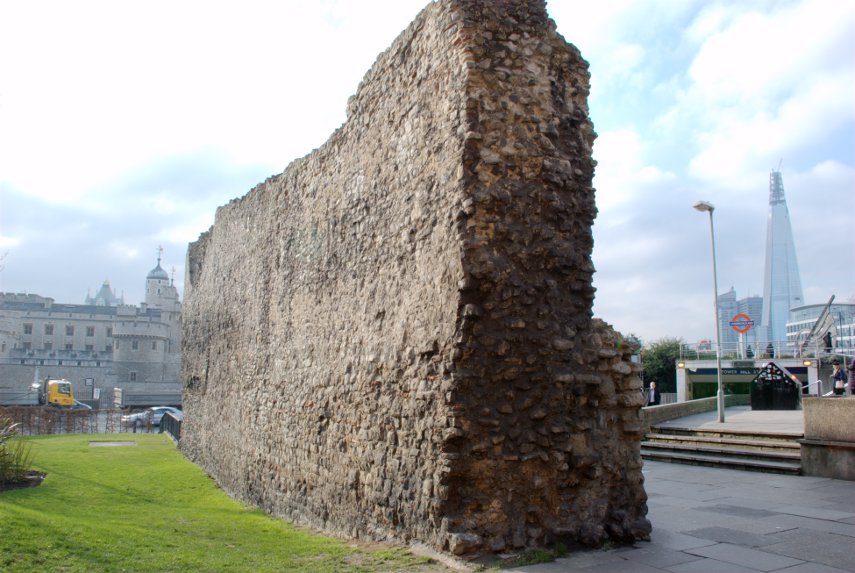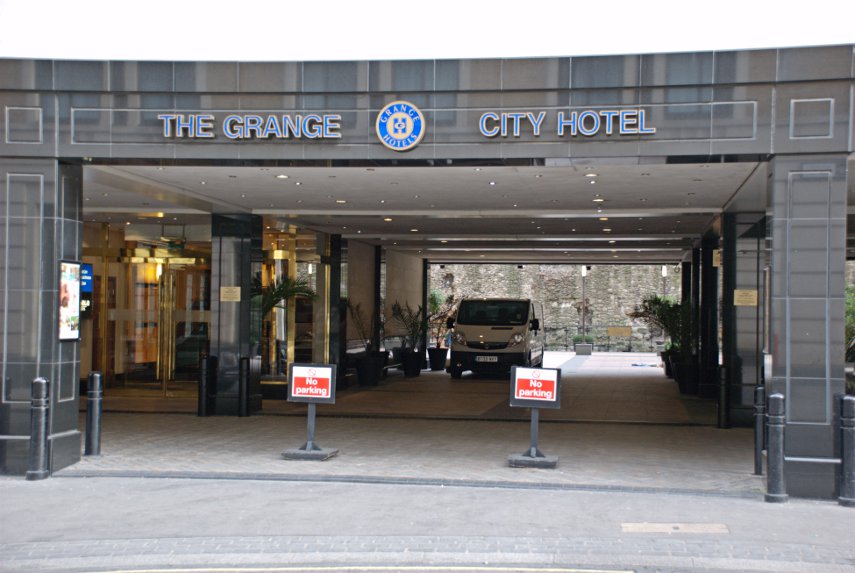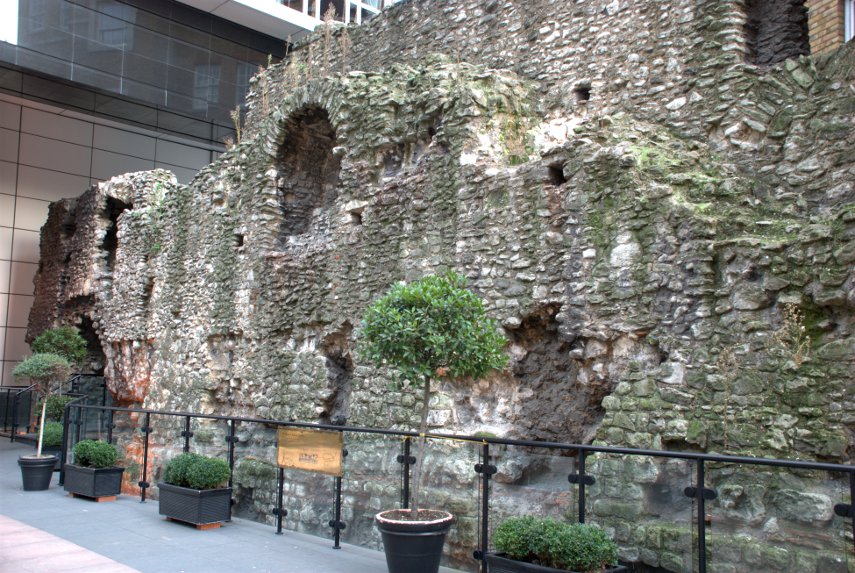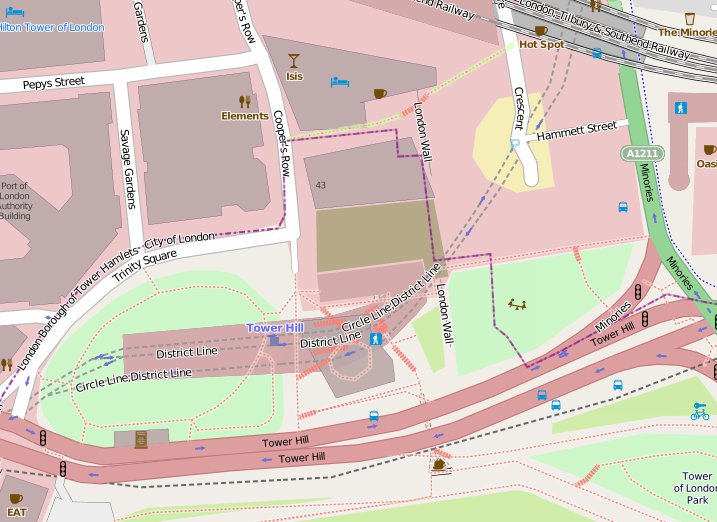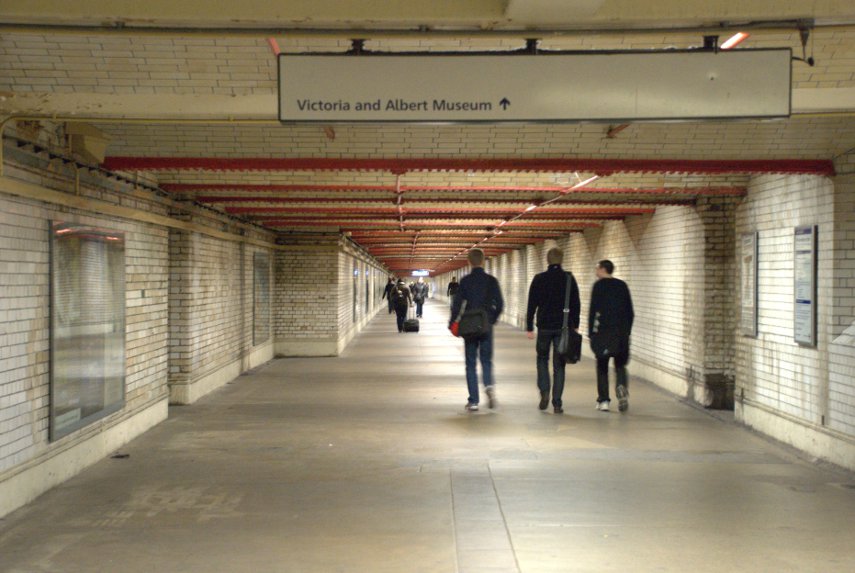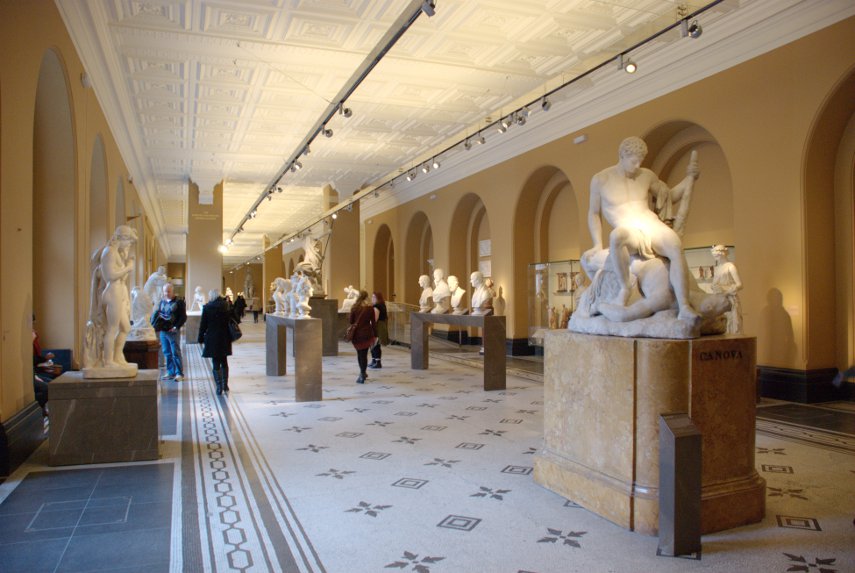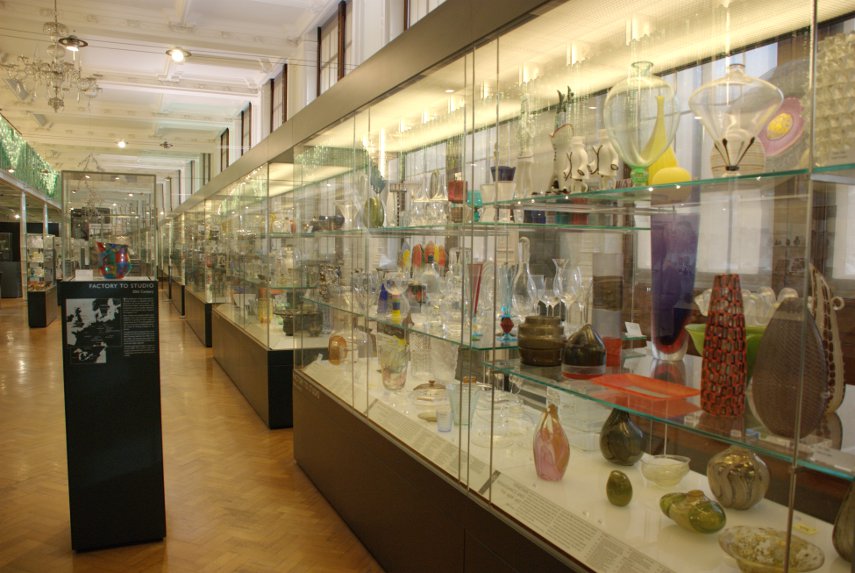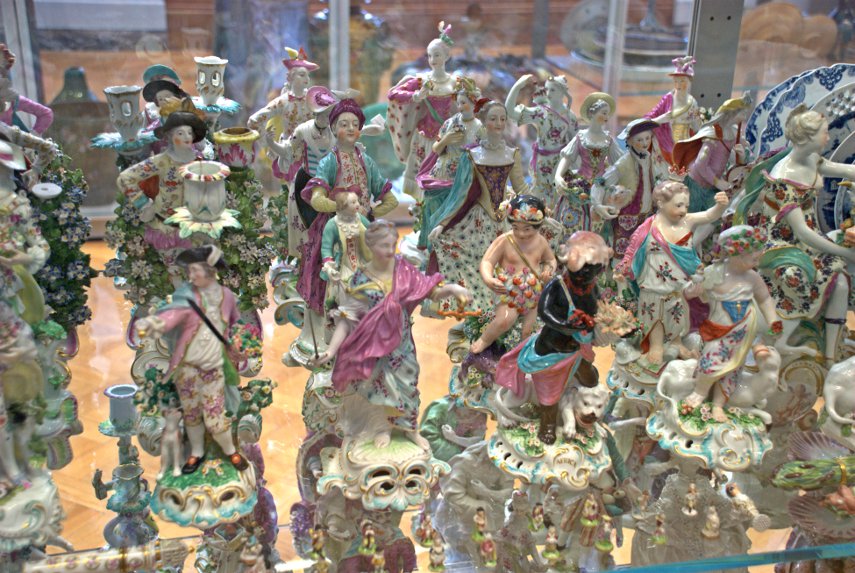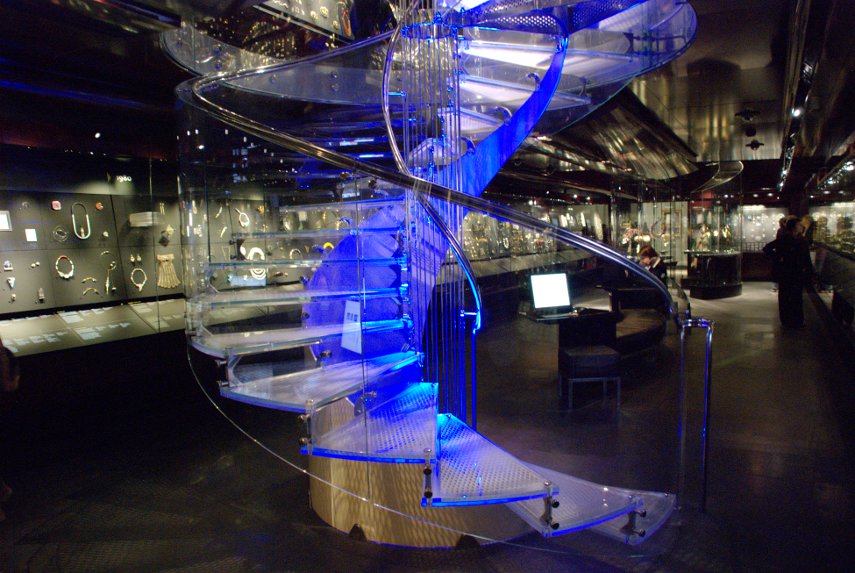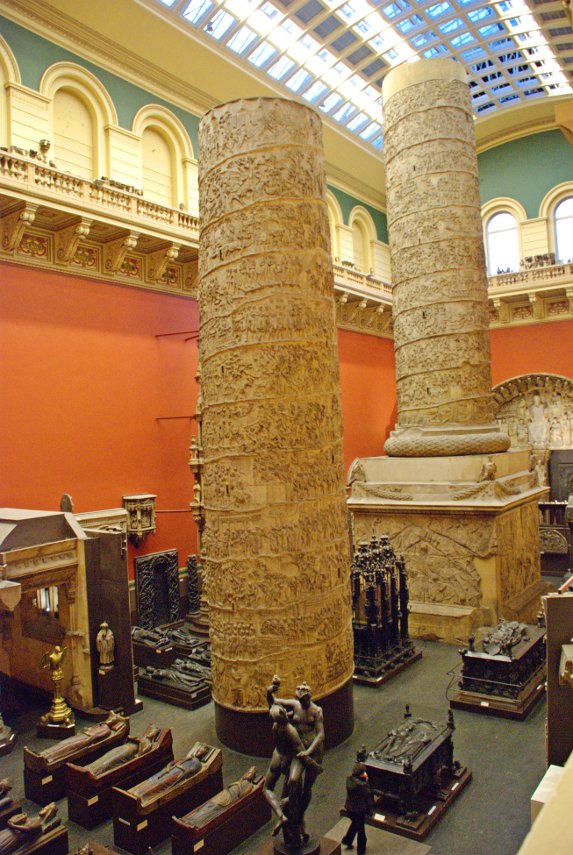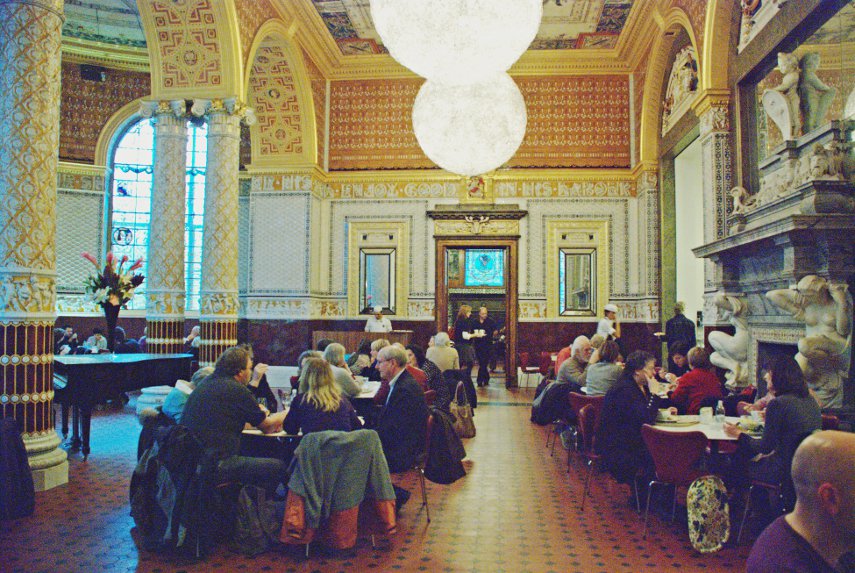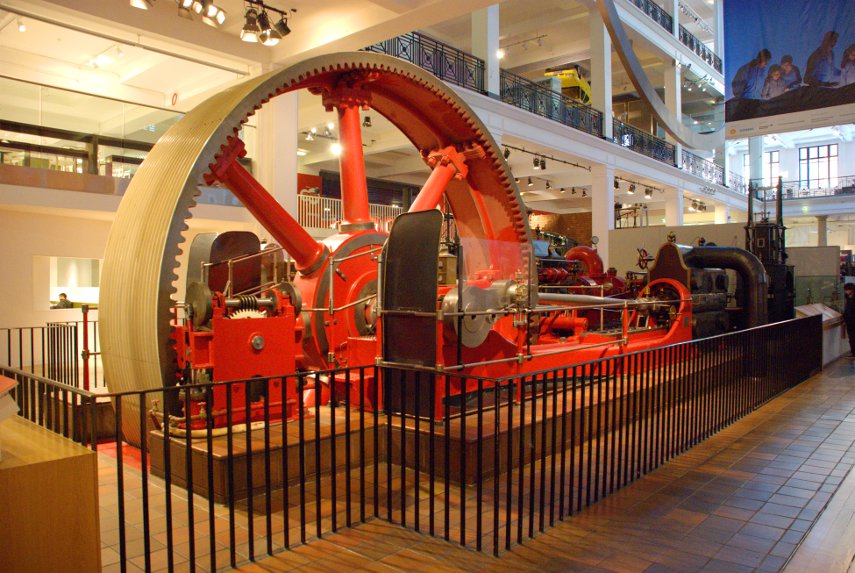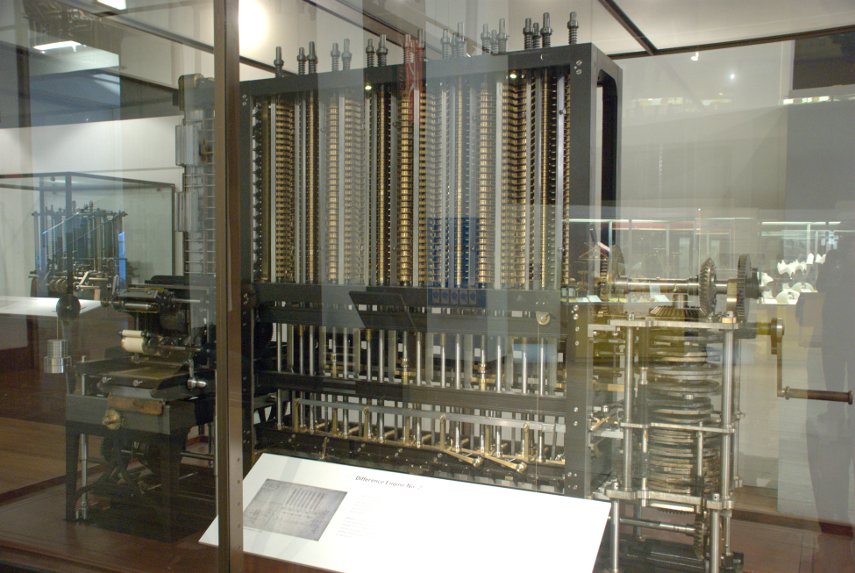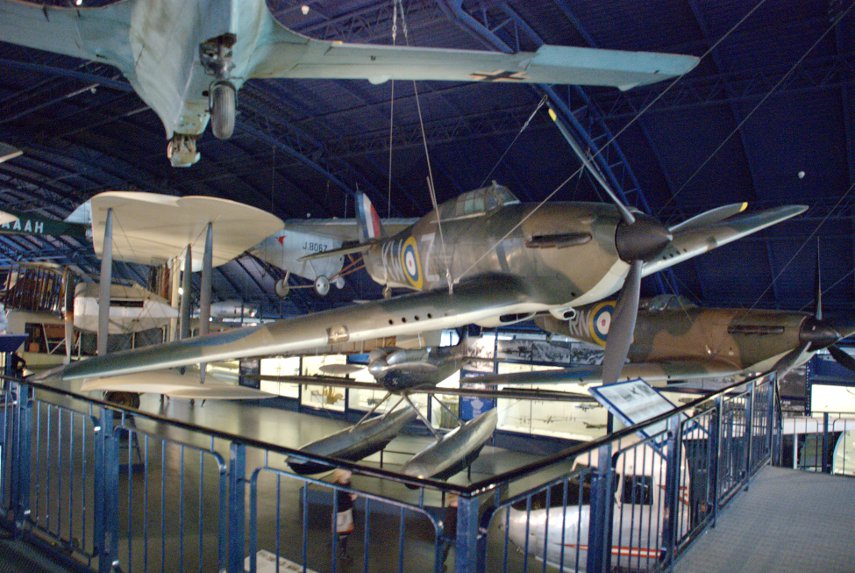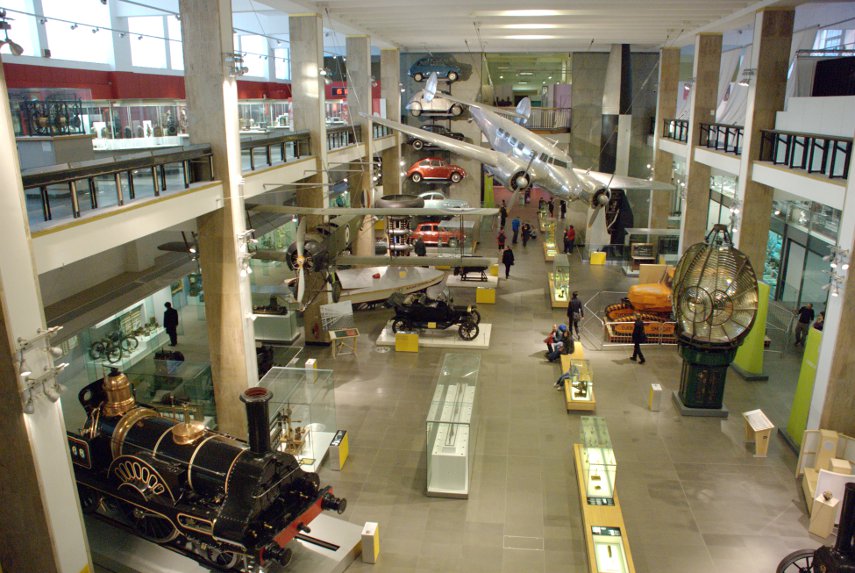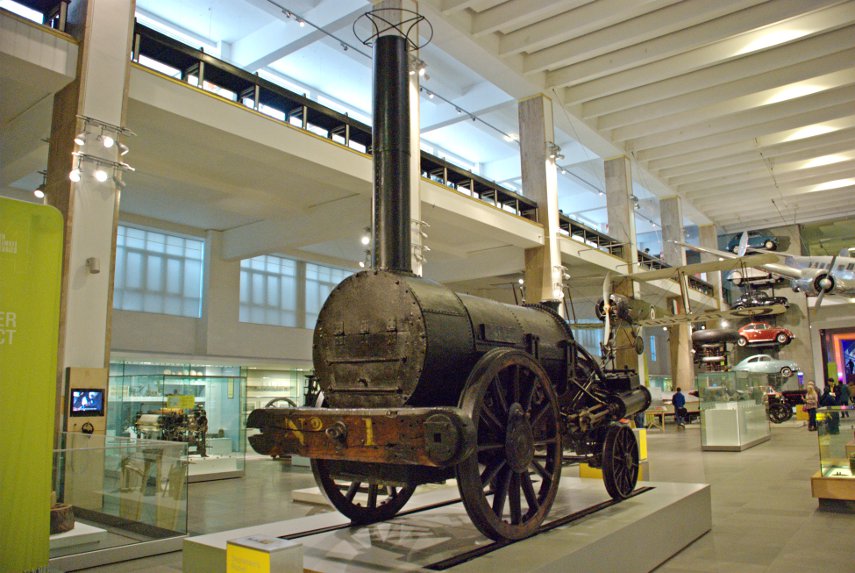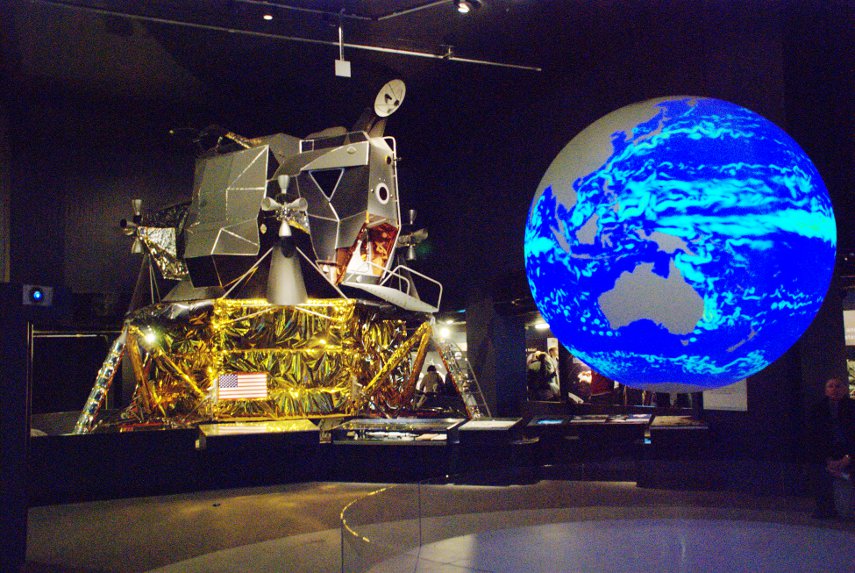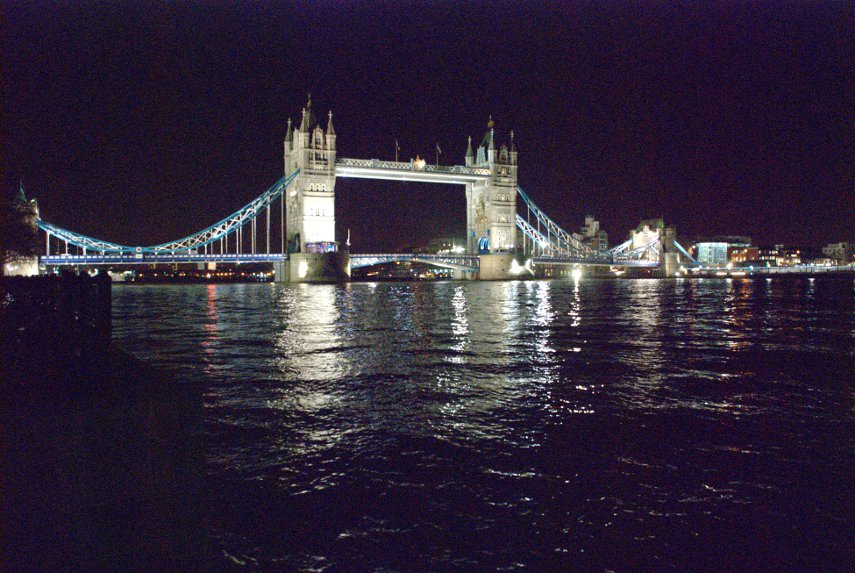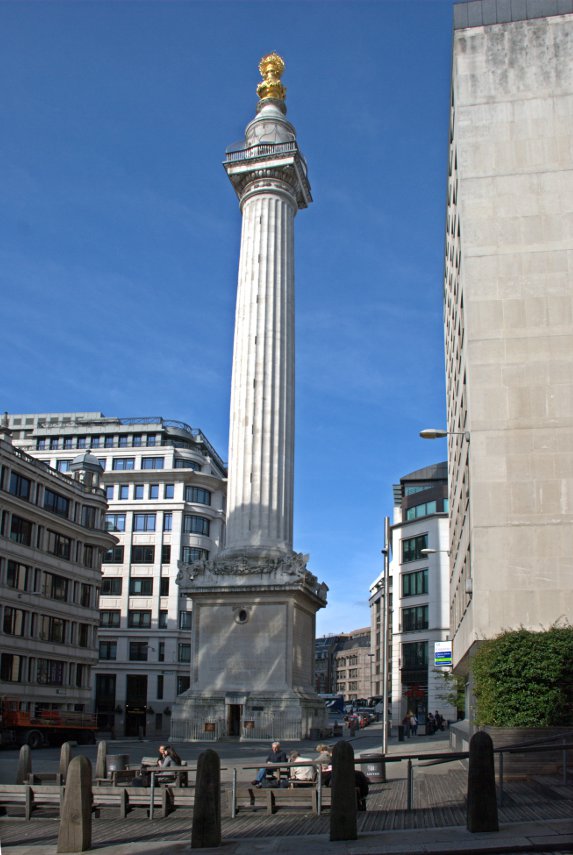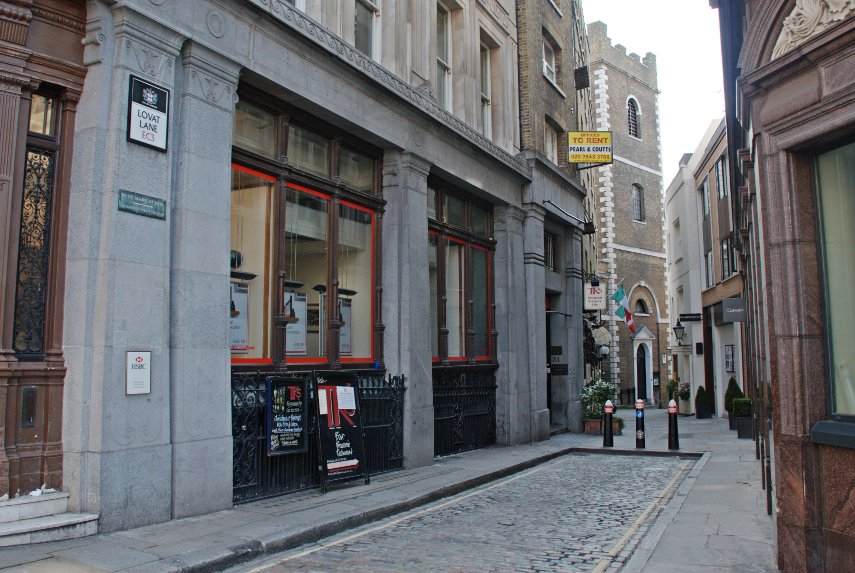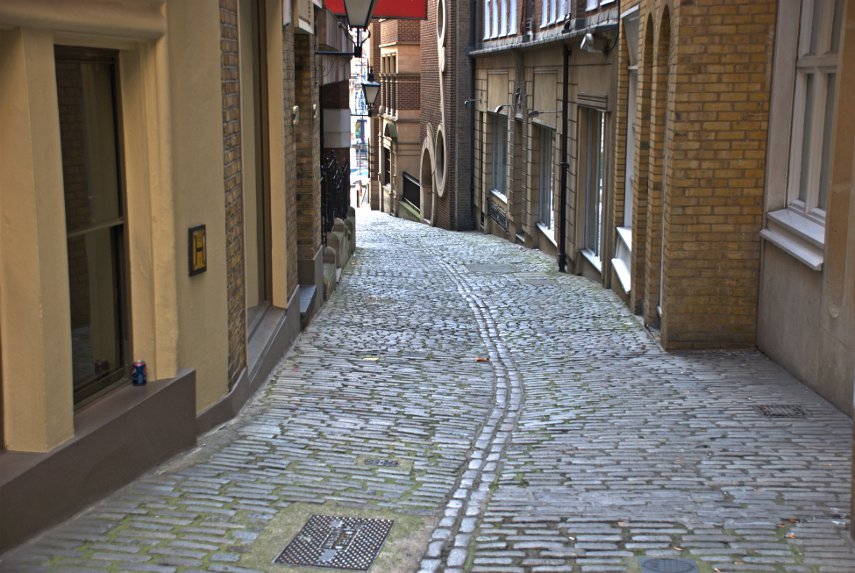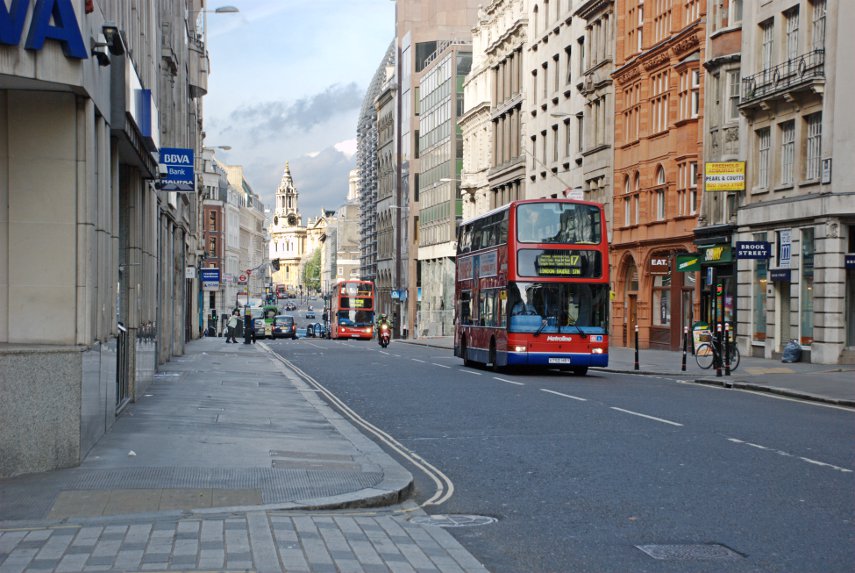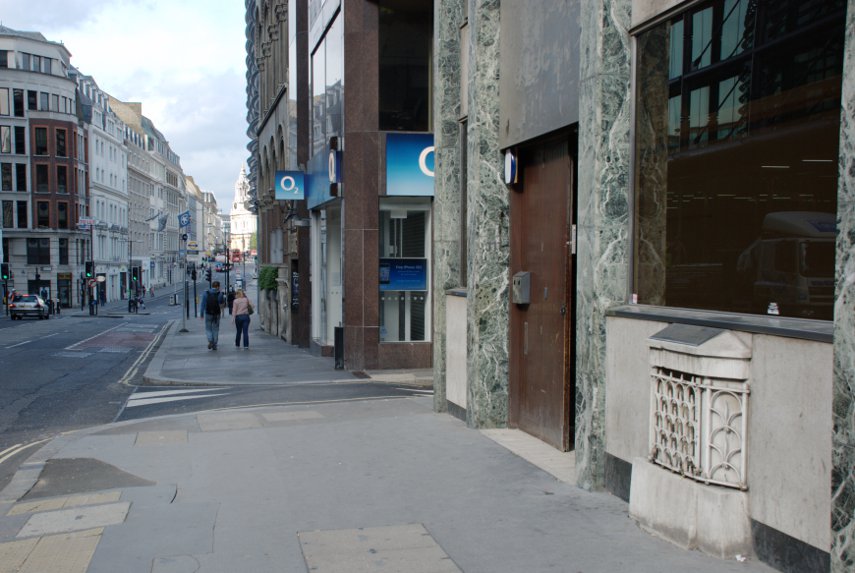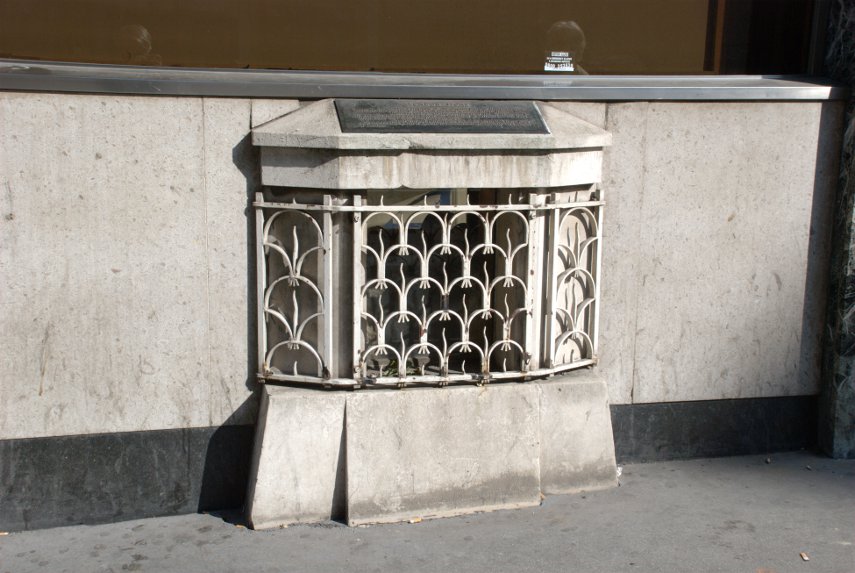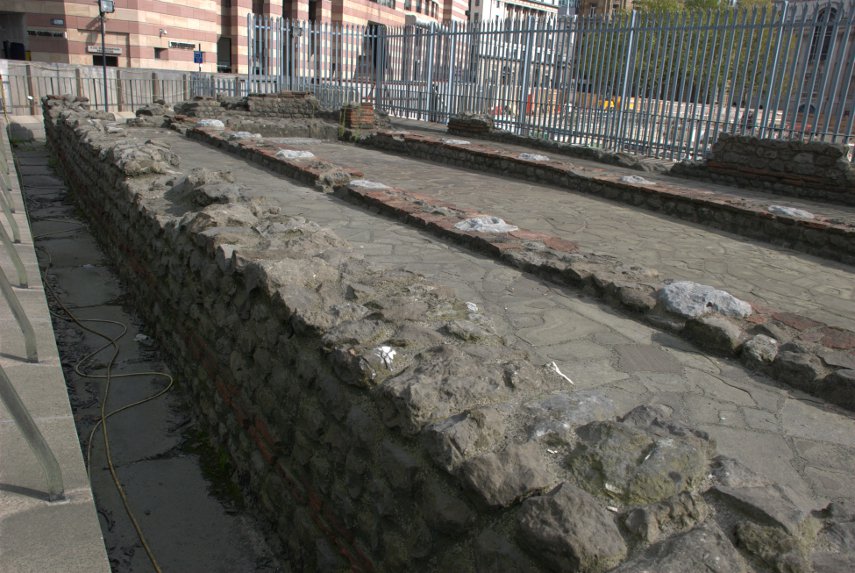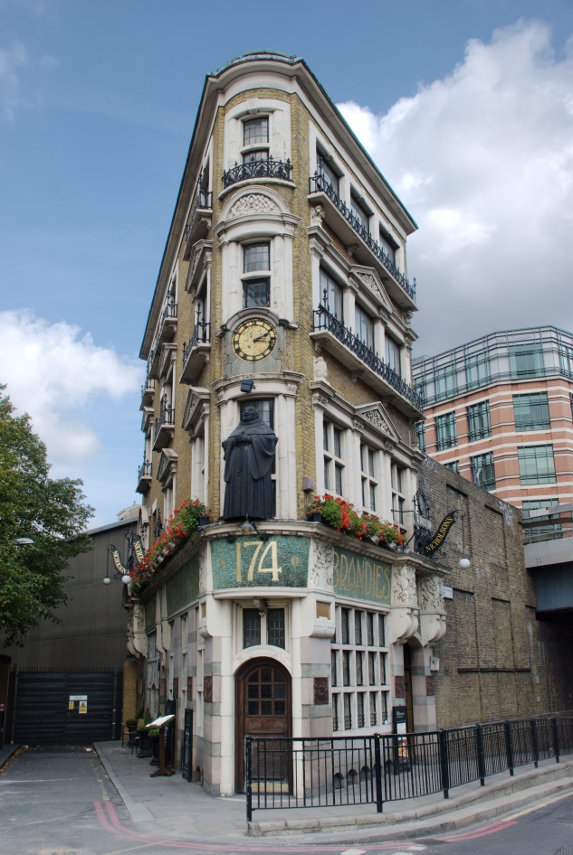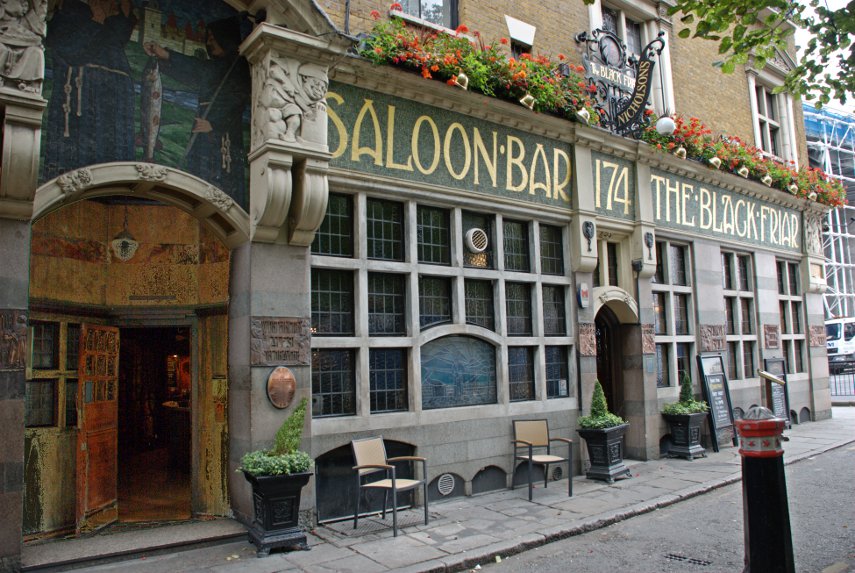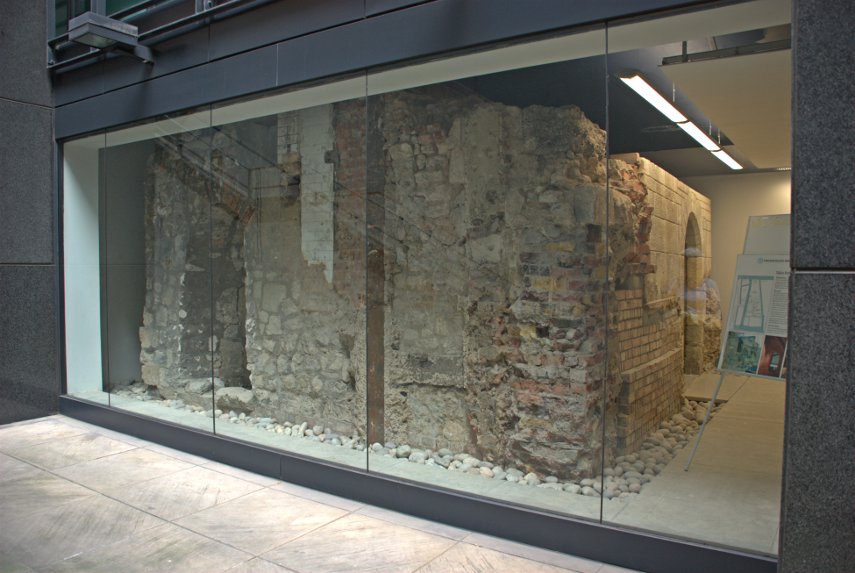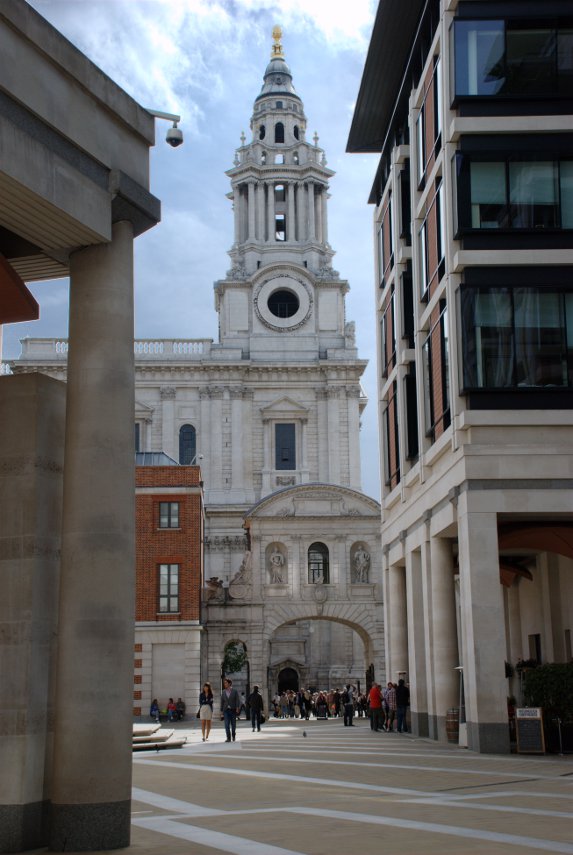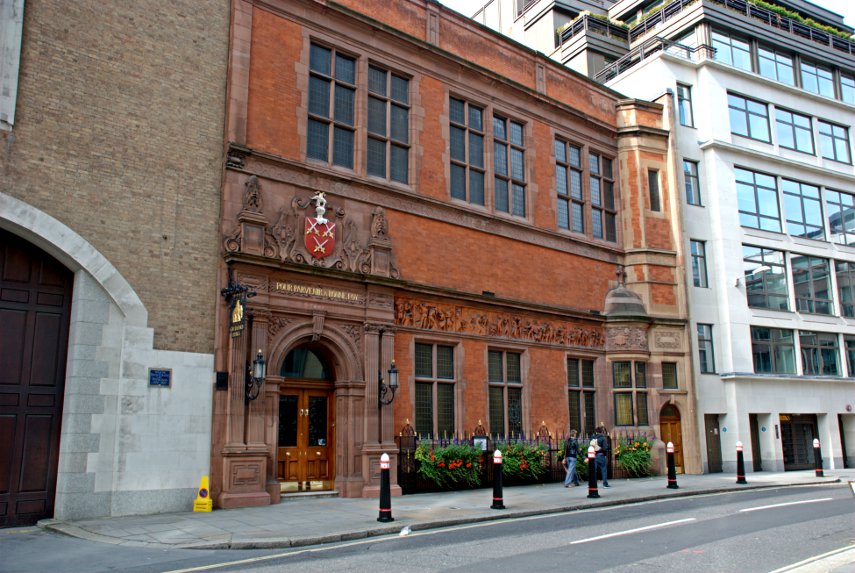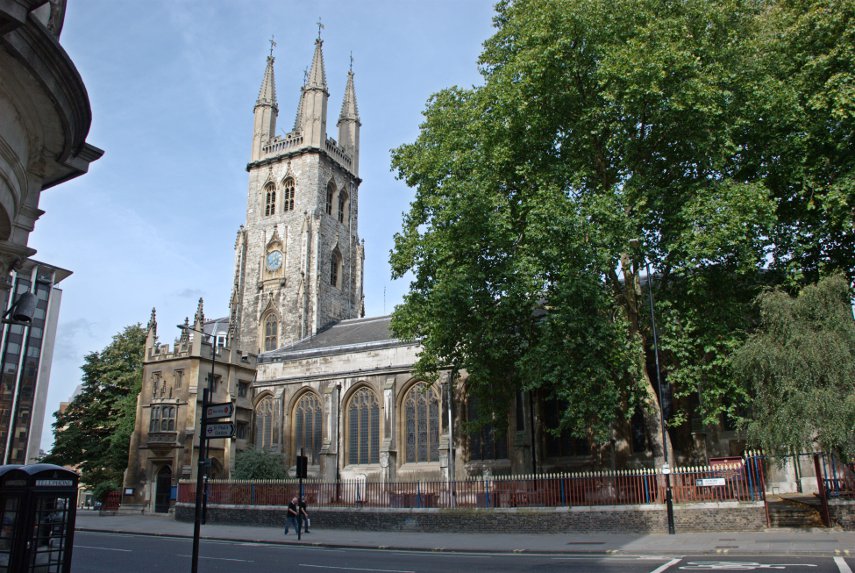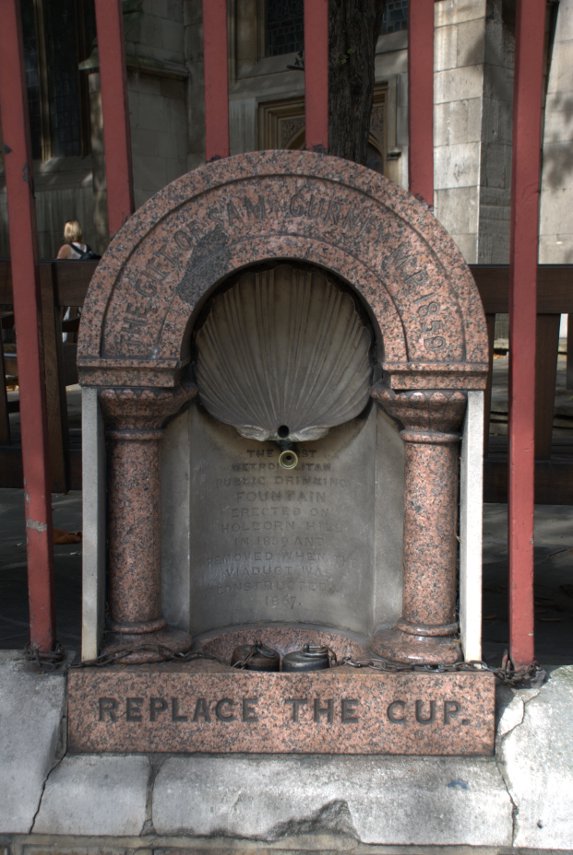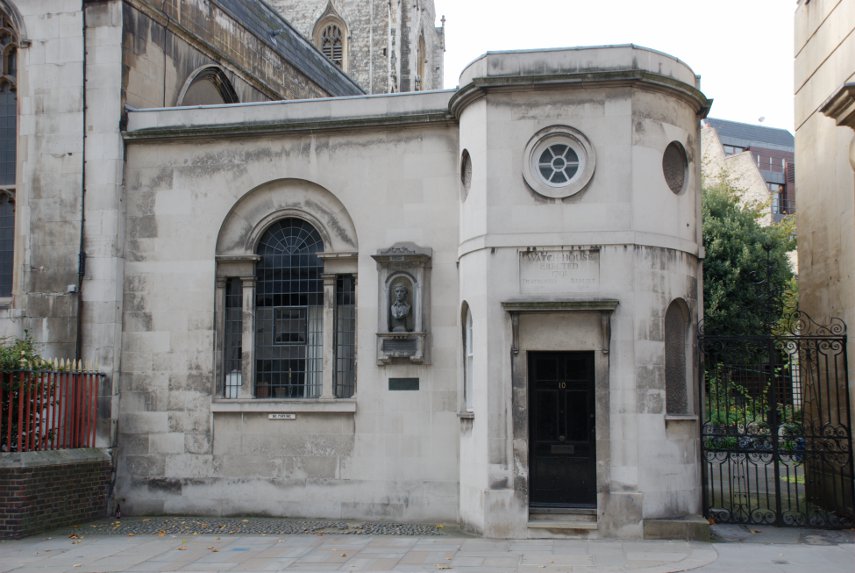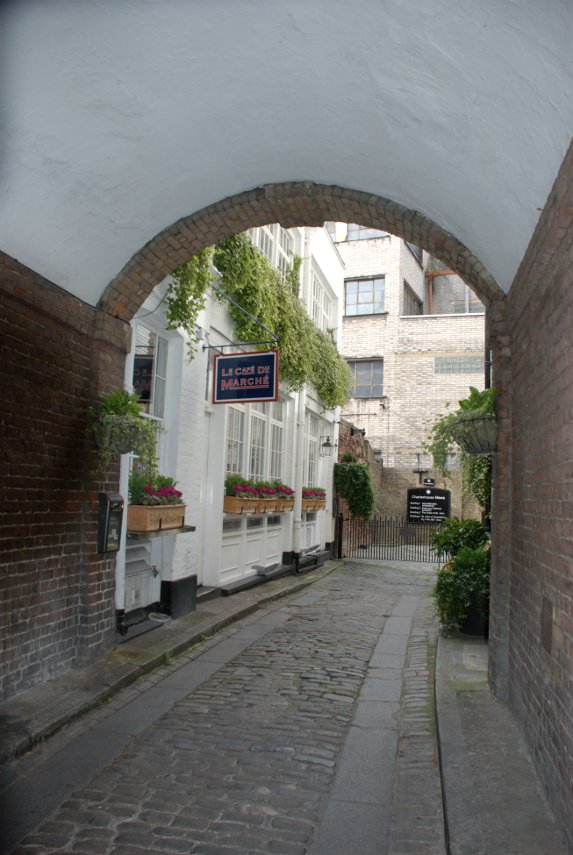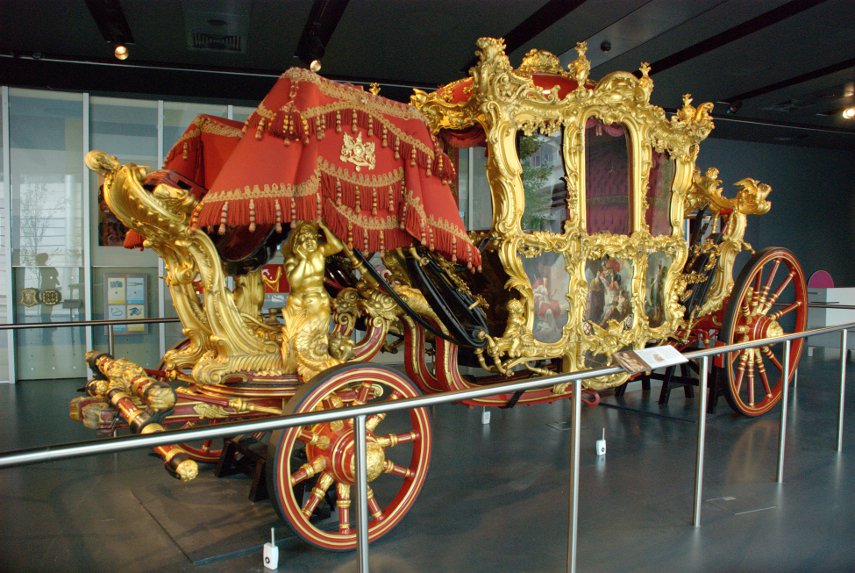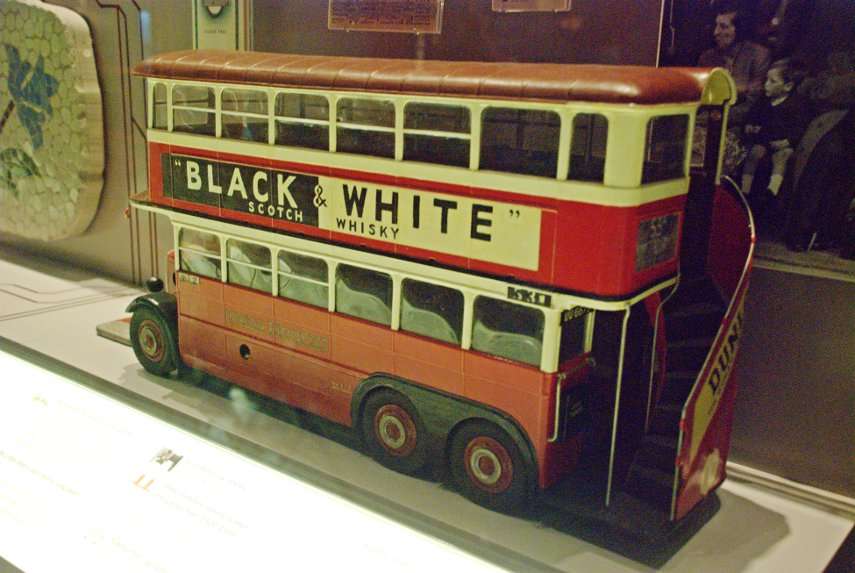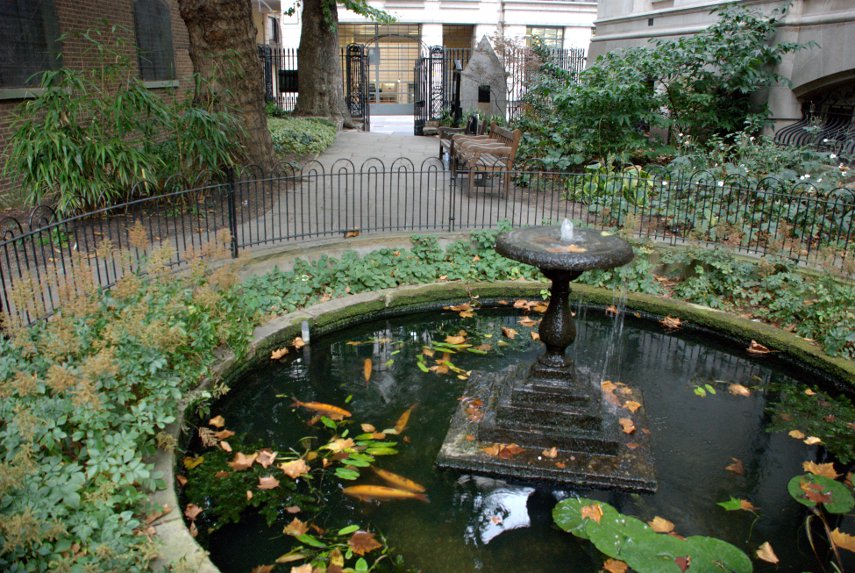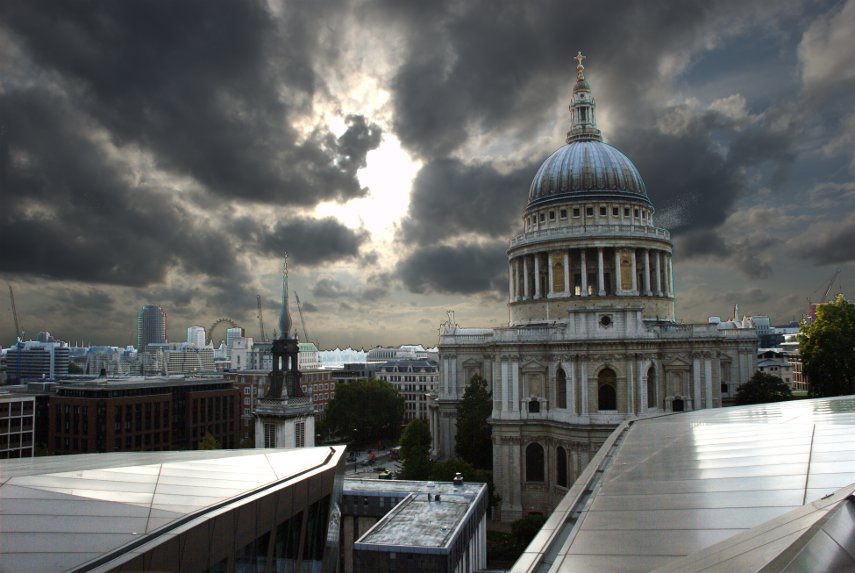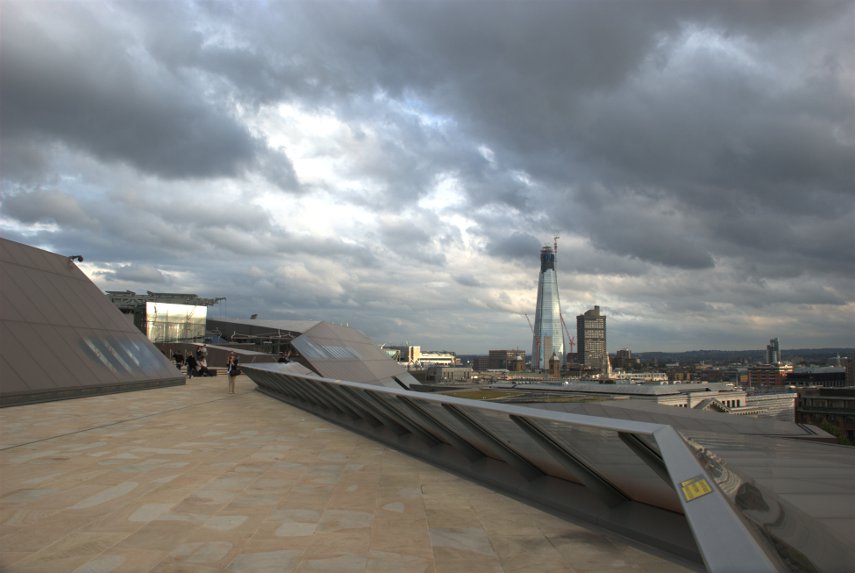
The mug on the left dates from 1630 and the mug on the right dates from 1936.
We are just back from our day trip today but where have we been? 
We started our walk as soon as we got off the train, at Liverpool Street Station, so you may guess that our destination was London. We walked west towards Finsbury Circus, which is a small, oval shaped park/garden, with the intention of having a look at it but we were thwarted by CrossRail. CrossRail is a new project which will enable normal overground trains to run from places east of London to places west of London, or vice versa, by means of an underground route through tunnels. The building project will last for years! Finsbury Circus will, eventually be restored to its former condition but that is years away.
We walked around the road (I say 'around' because it's oval in shape) which passes the garden heading towards Moorgate with the intention of crossing Moorgate to head further west but that was thwarted by CrossRail too. We had to go south, not very far, to London Wall, along London Wall, not very far, and turn north again to get back on our intended track. We hoped that the word 'thwarted' wasn't going to appear too often.
After a short distance we found ourselves at the start of Moorfields Highwalk at the south-eastern corner of the Barbican. The Barbican is situated in an area of London which was severely bombed in World War II and consists of housing and the largest performing arts centre in Europe all designed in the Brutalist style. The whole area was planned with pedestrian thoroughfares above ground level, hence the term 'Highwalks', and was opened in 1982.

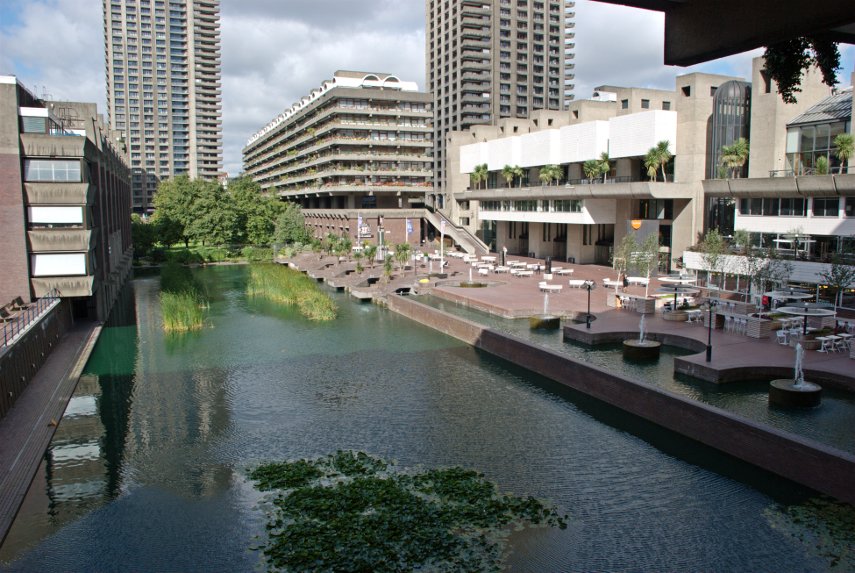
The building with the white blocks on the right in the lower picture is the Arts centre. This place is a maze of walkways on different levels although there are boards with maps scattered around including the all important 'you are here' legend.
This old stone tower is part of the original Roman wall around London

and this is a section of the Roman Wall with that same tower at the far end. You probably wouldn't expect to find something like that in a development like this.
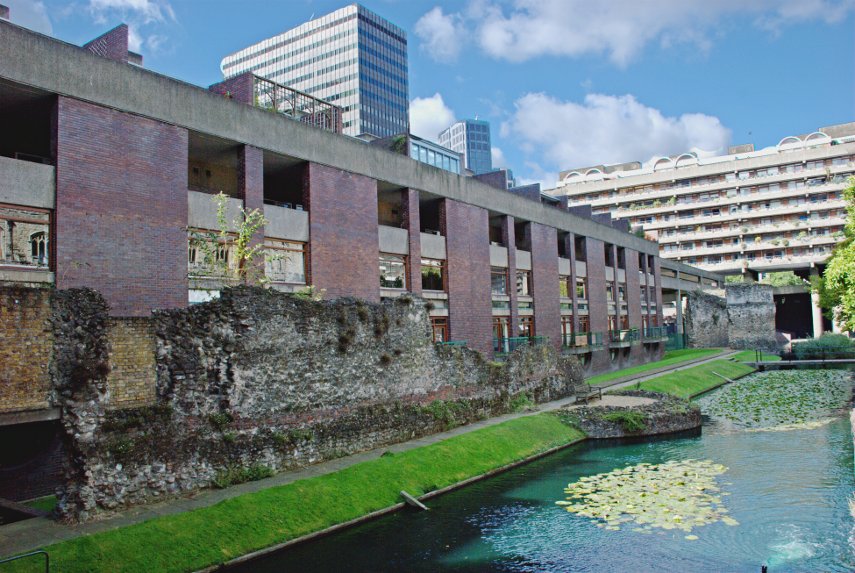
Still within the Barbican complex we found the church of St. Giles-without-Cripplegate. The name means that the church was without (outside of) the Cripplegate – one of London's old gates. The church is dedicated to St Giles, patron saint of beggars and cripples and is one of the few medieval churches, dating from 1394, left in the City of London having survived the Great Fire of 1666.
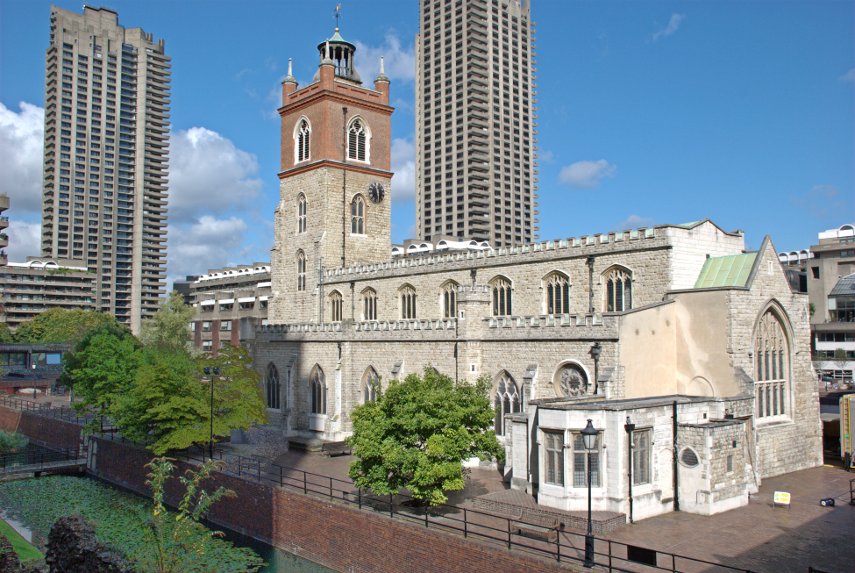
A little further on and still within the Barbican we found this:

Ironmongers Hall is an Elizabethan building which, although scorched, escaped the Great Fire of London.
We were now in the south-west corner of the Barbican and we left the Barbican at this point and headed north-west to Cloth Fair where we found the Tudor Gatehouse of the church of St. Bartholemew the Great with the church just visible through the gateway in the top picture.

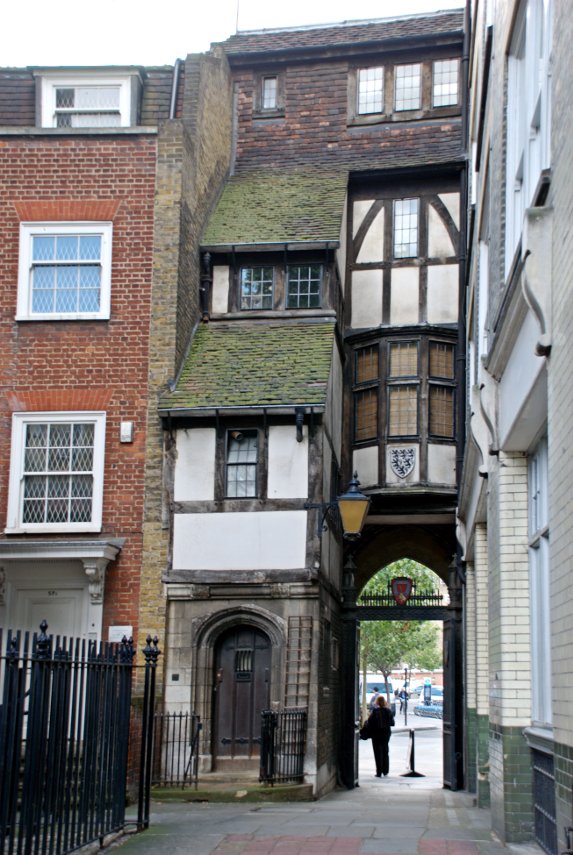
The church is Norman and, although large, is only a part of the original priory church. There is an entrance fee of £4.00 and I have to say it is really not worth that much. I would say £2.00 is nearer the mark especially as one has to pay another £1.00 to take photographs.
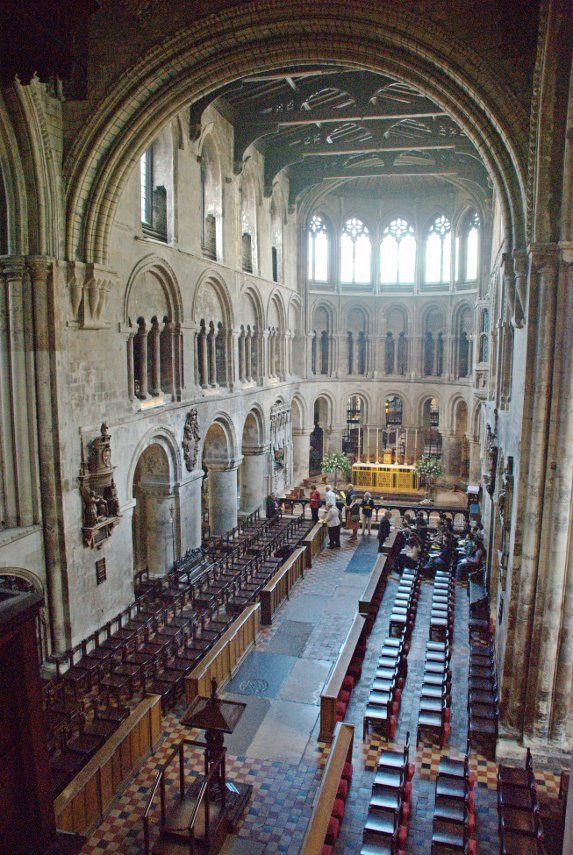
This shows all that is left of the Cloisters and it is now used as a cafe where we had lunch. We both had Lentil and Ham Soup with some bread and although the soup was substantial and very nice it was only just warm enough and service was very slow.

Just around the corner from St. Bartholemews is Cloth Fair. Cloth Fair is a rather narrow street with a Tudor house which escaped the fire of London and whose bay windows are said to be even older.

From the end of Cloth Fair we look across Long Lane to Smithfield Market. Smithfield is not as nice as Covent Garden or Leadenhall Market and part of it is still a wholesale market but it is worth a look if you happen to be nearby. There is some very nice structural ironwork to be seen along Grand Avenue, shown here, but no stalls or shops.
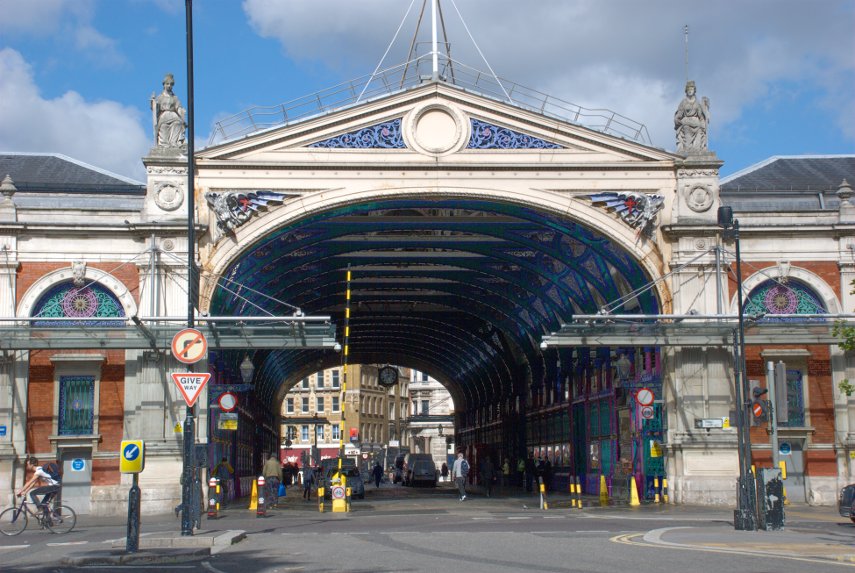

We walked through Smithfield along Grand Avenue then along St. John's Lane, still going north, to reach our next destination – St. John's Gate. This archway was built in 1504 as the entrance to the Priory of the Knights of Saint John – the Knights Hospitallers. There is a small,free, museum inside run by St. John's Ambulance.

A little further north, but only a few hundred yards, is the Priory Church of St John, dating from 1504, with its 12th century crypt which is certainly worth a visit.

The strange thing about the church is that although it is 16th century it has little atmosphere and has the appearence of being quite recent.
We had now reached our northern-most point so we turned round and headed back. So was this the end of our trip? Well, no it wasn't as we still have quite a bit to see (We haven't seen the mugs yet). From St. Johns Gate we went back through Smithfield Market, past the end of Cloth Fair and down Giltspur Street. Here, by the junction with Cock Lane, we saw the Golden Boy of Pye Corner.

The inscription reads "This Boy is in Memmory Put up for the late Fire of London Occasion'd by the Sin of Gluttony 1666". The spelling and the use of capital letters is theirs not mine.
As you probably know the Great Fire of London started in Pudding Lane and was finally stopped here at Pye Corner. That appeared to the people of the time as significant and they assumed that God was punishing them for Gluttony (Pudding Lane, Pye Corner – get it?).
We headed due east from here and arrived at our next planned stop.

You may notice that we are above ground level here and that's because we are back on the Highwalks of the Barbican. The entrance to the Museum of London is on this higher level.
This explains the 'mug' reference at the start of this post because this is where that photograph was taken. There is an awful lot of stuff here and we didn't have time to see it all but we did wander around a number of the galleries.
One of the exhibits which reminded me of the Golden Boy was this painting featuring the Great Fire of London:

It must have seemed like the Apocalypse to someone standing there at the time.
We also noticed yet another piece of the old London Wall through a window on one of the higher level galleries.

When I first saw this Roman mosaic I assumed it must be a reproduction as it appeared to be perfect but, no, it's the real thing discovered and excavated by the Victorians.

After wandering round for quite some time we realised that time was passing and we had still more to see outside the museum but we were also feeling thirsty so we stopped for a coffee/tea in the Sackler Hall, one of the two cafes in the museum.
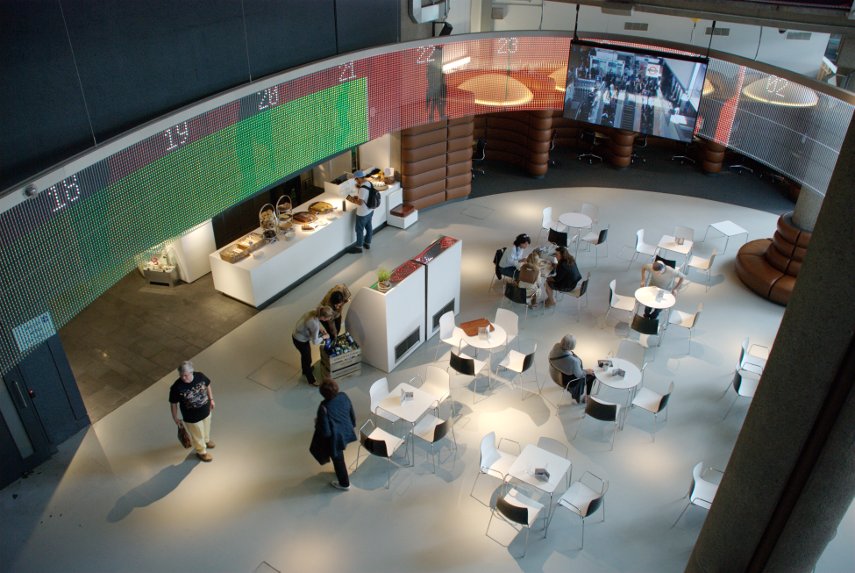
We left the Museum of London via Bastion Highwalk which runs east parallel to London Wall and turned down Wood Street, across Gresham Street into the lower part of Wood Street until we got to Comptor Passage.

Before we go any further have a look at this web page about Mitre Court:
http://www.ianvisits.co.uk/london-alleys/page20.php#Mitre%20Court%20EC2
We were looking for that structure labelled 'The Wood Street Comptor" in Mitre Court which was supposedly the entrance to the old debtors prison. It appeared that Comptor Passage was approximately where Mitre Court should have been.
We wandered through Comptor Passage into Milk Street and Russia Row but no sign of Mitre Court. To cut a long story short we couldn't find it and gave up. After we returned home a bit more research revealed that there was indeed some sort of structure under Mitre Court but archaeological investigation revealed that it was nothing more than some Victorian wine cellars which, at some stage, someone had tried to promote as a venue for parties describing it as the old Wood Street Comptor which it wasn't. They probably erected that structure and its signs.
Mitre Court has been demolished to make way for new development because there was nothing of historic interest there so no wonder we couldn't find it. In other words the whole debtor prison thing, including the structure over the entrance, was a complete fake. There was a real Wood Street Comptor but it had burned down long ago.
We headed back to Gresham Street and the Guildhall.

This is the oldest lay (non-eclesiastical) building in London built between 1411 and 1440. We went from here just around the corner into Basinghall Street to look at these strange stone carved animals/demons on the upper part of the Guidhall.

It was now time we headed for Liverpool Street Station so we turned into Masons Avenue which, in spite of its grand name, is a very narrow alley.

Through there, then Great Bell Alley into Telegraph Street and after lots of twists and turns we eventually arrive back at the station to catch our train. There is lots more to see in the area we have just visited so we plan to return for more at a later date.
![]()
![]()
